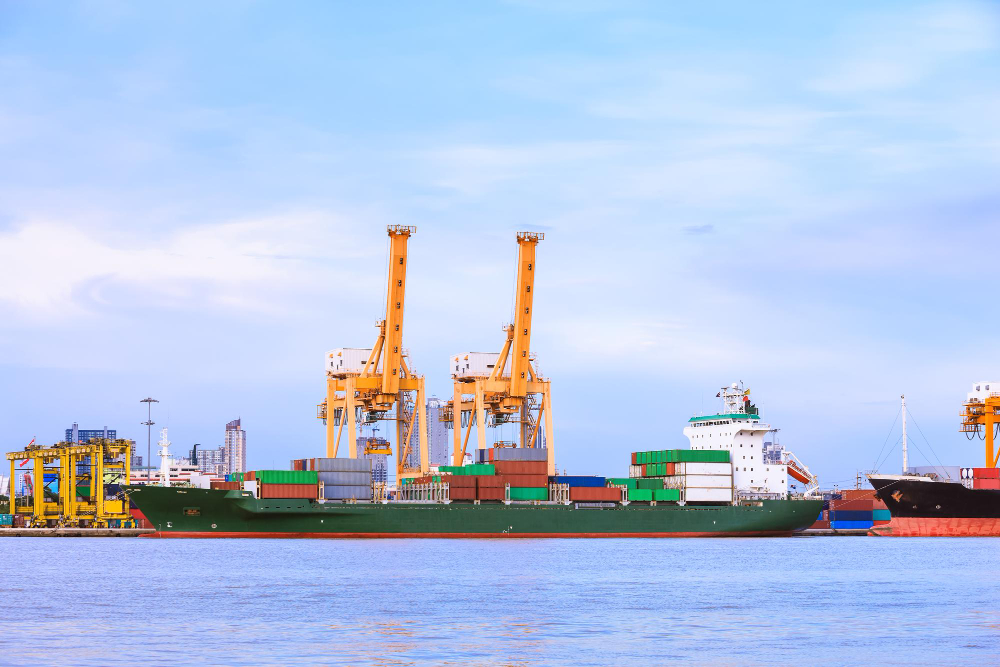The Philippines is becoming a significant player in international trade, and international shipping is playing an important role as a bridge linking local companies to the world. Accelerated growth in e-commerce and infrastructure upgrading backed by government initiatives have reshaped the country’s logistics industry. For companies and individuals seeking to tackle the intricacies of international shipping in the Philippines, being informed on prevailing trends and effective strategies is crucial. This guide discusses the changing logistics landscape in the Philippines and provides practical advice for newcomers.
Introduction to International Shipping
Overseas shipping is a pillar of the Philippine economy, driving trade and integrating Filipino products with the world. The freight and logistics market of the country was worth USD 19.16 billion in 2024 alone, with growth estimated to reach a compound annual growth rate (CAGR) of 8.10% up to 2034. Much of this expansion is spurred by the growth of e-commerce, which has revolutionized the behavior of consumers and opened new frontiers for logistics companies.
Cross-Border E-Commerce (CBE) is on the increase, with in excess of 70 million Filipinos undertaking purchases abroad. Electronical merchandise alone sold over USD 6 billion in 2022, putting into focus efficient freight forwarding as well as warehouse solutions.
Understanding Current Trends
E-Commerce and Cross-Border Trade
E-commerce is one of the fastest-growing sectors in the Philippines, driving demand for international shipping services. The rise of cross-border trade has created a robust market for logistics providers, who must now adapt to handle increased shipment volumes and complex supply chains.
Impact on Logistics
The surge in online shopping has led to greater investments in freight forwarding, warehousing, and last-mile delivery solutions. Logistics companies are also expanding their service offerings to include specialized handling, packaging, and return management to meet the needs of e-commerce businesses.
Economic Contribution
Cross-border e-commerce not only boosts consumer spending but also contributes significantly to GDP. In 2023, the Department of Trade and Industry projected that e-commerce would contribute PHP 1.2 trillion (USD 25 billion) to the economy. This underscores the importance of integrated logistics services in sustaining economic growth.
Infrastructure Modernization
Key Projects
The PHP 11 billion Kennon Road rehabilitation project aims to enhance connectivity by modernizing one of the key access routes to Baguio City, while the North-South Commuter Railway spans 163 kilometers, linking regional growth centers like Clark and Calamba City to Metro Manila. Additionally, the Trusted Operator Program Container Registry Monitoring System (TOP CRMS) is being implemented to digitalize port operations, reducing delays by up to 17%.
Technological Advancements
Technology is revolutionizing logistics operations in the Philippines. From warehouse management systems to advanced freight tracking tools, digital solutions are helping companies improve efficiency and customer satisfaction.
Benefits of Digitalization
Digital systems have revolutionized logistics by reducing customs processing times by up to 80%, cutting delays from weeks to just 3–5 business days. Real-time shipment tracking enhances transparency for customers, while automation tools streamline operations like inventory management and order fulfillment. Additionally, leading logistics companies are adopting smart warehouses with temperature-controlled facilities to cater to industries such as pharmaceuticals and food.
Essential Steps for Beginners
Choose an Appropriate Shipping Method
Choosing an appropriate shipping method is vital for meeting specific logistical needs. Air freight is ideal for urgent shipments, although it is more expensive. Sea freight, on the other hand, is cost-effective for bulk goods but slower. For a balanced approach, multimodal transport can be used, combining air, sea, and road transport to optimize delivery times and cater to a variety of shipment requirements.
Understand Customs Regulations
Familiarity with import/export laws is crucial. Ensure compliance with duties, taxes, and documentation requirements specific to your shipment category.
Prepare Accurate Documentation
Preparing accurate documentation is crucial for smooth logistics operations. Key documents to focus on include commercial invoices, bills of lading, and certificates of origin. Ensuring that these documents are accurate and complete is essential for facilitating smooth customs clearance and minimizing potential delays.
Overcoming Challenges
Common Issues
Common issues in logistics often include port delays and regulatory hurdles. On average, a shipping container may spend up to 44 days at Philippine ports before exiting for its destination. Additionally, complex customs procedures can lead to significant delays if not managed properly, highlighting the importance of efficient handling and compliance with local regulations.
Strategies for Success
To achieve success in logistics, consider implementing several key strategies. Partner with experienced providers by collaborating with logistics companies that have expertise in navigating local regulations. Leverage technology by utilizing digital tools such as freight tracking systems to monitor shipments in real-time. Additionally, plan ahead by accounting for potential delays and building buffer time into your shipping schedule. This comprehensive approach will help ensure efficient and reliable operations.
Key Takeaway
International shipping in the Philippines plays a vital role in connecting Filipino businesses with global markets. As e-commerce continues to grow and infrastructure modernization progresses, the Philippines is well-positioned to become a hub for global trade. However, navigating this dynamic landscape requires careful planning and strategic decision-making.
Whether you’re an established exporter or a first-time shipper, understanding these dynamics will help you succeed in today’s fast-paced global economy. International shipping is more than just a logistical necessity—it’s a strategic tool for growth.



